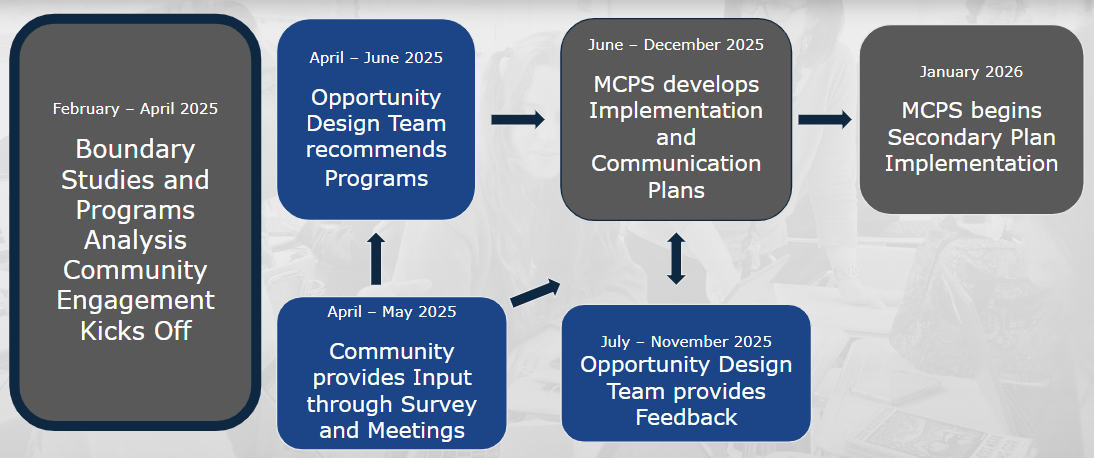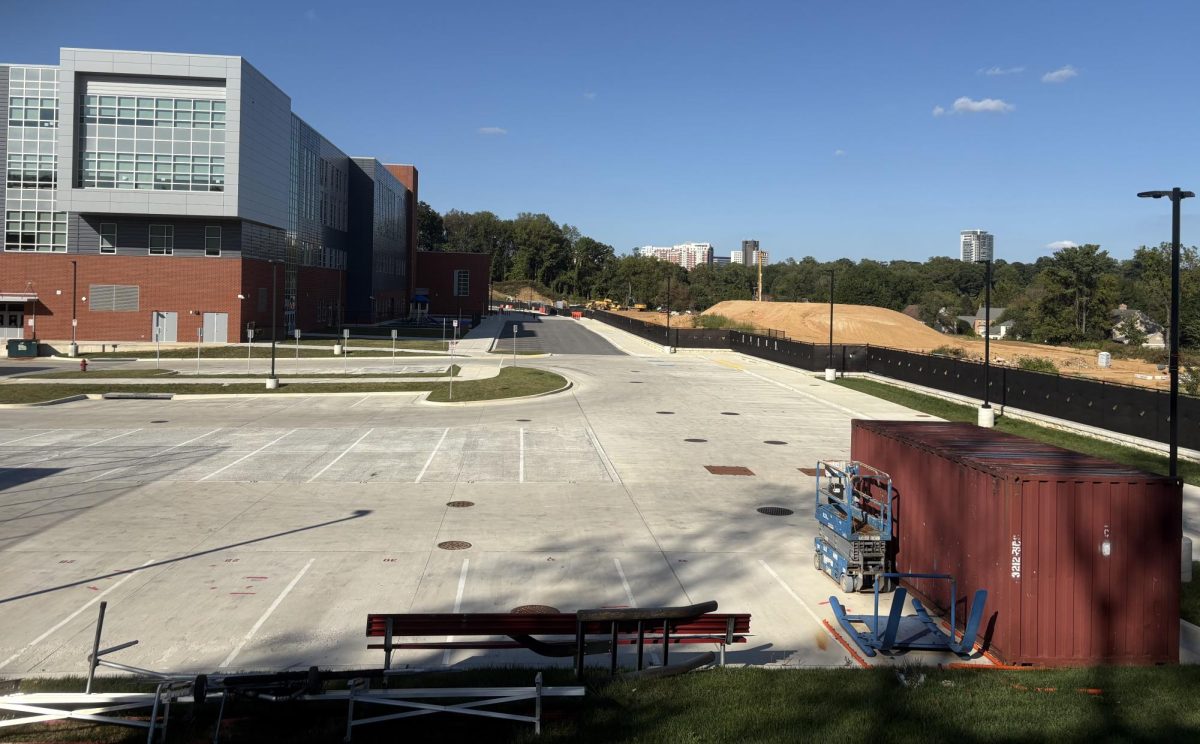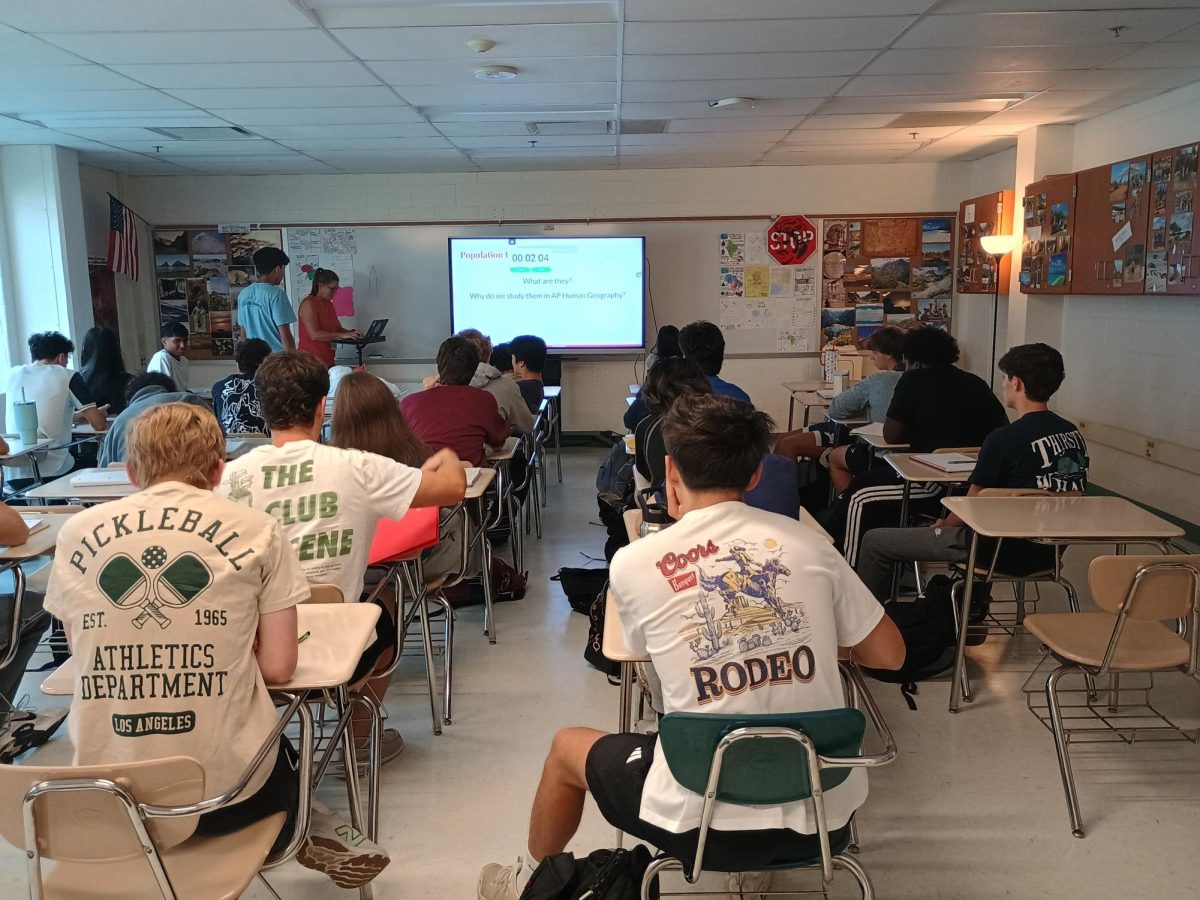MCPS is revamping all their districtwide academic programs, hoping to give easier access to high-quality, specialized opportunities to all students.
Though it won’t be implemented until the 2027-2029 school year, this motion will put an end to the all county-wide initiatives, which only allows students districted within the school’s region to participate in the program.
MCPS will be sectioning the county into five regions, each containing four to five high schools. The county has already released six regional options, each addressing a different concern pertaining to equity and access, including transportation, student demographics, faculty usage, consideration of wellness center locations, improved proximity and leverage of program assets.
“I believe the most important issue to the [WJ] families is keeping the WJ students in either WJ or Woodward,” PTSA secretary and WJ cluster representative Deborah Kornbluth Berger said. “Many families want their children near local schools. In case of [an] emergency or if a child is sick, it’s nice to be 10, not 20 minutes away.”
In all proposed regional options, WJ is grouped with both Wheaton and Woodward. The main difference for WJ in the six maps is whether Churchill or Kennedy will hold the final seat in the region.
These changes will uproot county-wide academic programs such as Richard Mongomery’s International Baccalaureate (IB) Program. Though seven other schools in the county offer similar IB opportunities, students widely opt to attend Richard Montgomery’s county-wide program instead of their home school’s regional program. This has led to Richard Montgomery’s IB sector operating at full capacity while others including Springbrook, Watkins Mill and Kennedy are all working under their maximums.
Students districted to attend WJ would only have access to Kennedy’s IB program, as the county has no plans to expand the IB program to any more schools.
Efforts to implement a regional model have been made as increasing amounts of students have been applying to specialized academic programs over the past few years, but only a percentage of those students can be accommodated by MCPS’s current layout.
“Today, a few schools dominate the most in-demand programs, which restricts opportunities for students across the county,” MCPS Executive Director of the Division of Teaching and Learning Angela McLane said. “Some of our programs do not have central bus stop transportation, therefore making them inaccessible to students. We know many more students across the county are qualified and eager for these opportunities than there are seats available today.”
A key benefit of the regional model is that transportation to and from schools will be guaranteed for all students attending a regional program, something that currently isn’t possible.
Some community members worry if the same programs at different schools will be equally rigorous to one another. MCPS plans to limit these worries by focusing on where programs are pulling resources from.
“Programs will be resourced equitably—not only with instructional materials but also with support for co-curricular and extracurricular activities,” McLane said. “Implementation will be closely monitored in the first four years, with ongoing evaluation of student outcomes to ensure programs remain rigorous and effective.”
With these updates, more seats will be available in specialized programs, providing a wider range of students with more opportunities to further their education. In each region, every regional program theme will be available.
These themes include Medical Science and Healthcare; Science, Technology, Engineering and Math; IB, Humanities and Languages; Leadership, Public Service and Education; Visual and Performing Arts, Design and Communication.
This news also comes as MCPS continues to monitor the ongoing boundary study, which will essentially change which high schools some students attend based on where they live.
“While boundary studies focus on home school assignments in specific areas, the program’s analysis is county-wide and focused on equitable access to high-demand, high-quality programs,” McLane said. “Doing both at the same time allows families to see the full picture when making decisions.”
Berger shares a different perspective, wondering how the ongoing boundary studies will influence program availability in certain regions.
“My personal question: Should the curriculum and the number of seats available in each school be set before determining the boundaries?” Berger said.
As for applying for these academic programs, some will be criteria-based, meaning that students must reach certain academic standards for admission. Others will be interest-based, meaning that they’re open to all students, no matter their academics. If there’s a high demand for seats in a certain program, a lottery system will be utilized to give all eligible students a fair chance of being admitted into their program of choice.
“Our goal is to expand programs to meet interest,” McLane said. “Strong demand gives us the chance to grow programs in each region and serve more students. The great thing is that we will be in a continuous improvement cycle so we can often refine, streamline and upgrade as needed.”
To learn more about the future of regional academic programs, MCPS will be hosting virtual and in-person meetings throughout October. You may also submit a question to the county by filling out this form.









